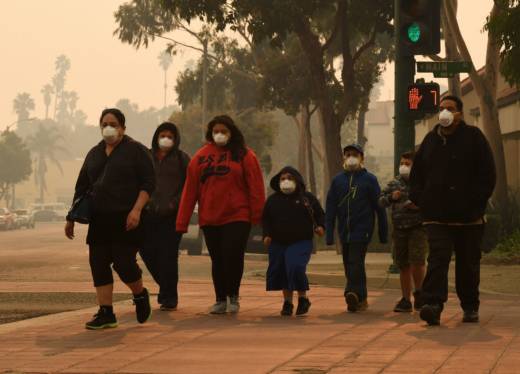In 2017, the U.S. Forest Service’s wildfire suppression costs reached a record high of $2.4 billion.
“Smoke concentrations will roughly double and this will counteract a lot of improvements gained from a reduction in emissions from human sources, such as power plants,” says Pierce.
Wildfire smoke poses a risk to human health because of its composition, a mixture of gases and microscopic particles from burned material known as particulate matter.
Exposure to particulate matter can irritate the eyes, aggravate respiratory issues, and worsen chronic heart and lung diseases, according to the Centers for Disease Control and Prevention
It can also lead to premature death in people with heart or lung disease, according to the Environmental Protection Agency.
For the study, researchers used simulated concentrations of particulate matter generated by a model for early, mid, and late-century time frames.
Based on those concentrations, researchers then calculated the expected number of annual deaths due to chronic exposure to wildfire smoke.
“We relied on previously done epidemiological studies that have come up with relationships between particulate matter concentrations and death rates,” says Pierce.
The findings underscore the importance of preparing for future air quality changes caused by wildfires, according to Pierce.
But he cautions that more research needs to be done since the findings were based on a single simulation due to the high costs associated with doing environmental-based computational work.
“This is the first simulation of its kind and we don’t have a proper probability distribution model,” says Pierce. “With more models, you can come up with a range of probabilities of what the future might look like.”
The model used in the study bases its estimates on current climate projections that corrects for future things like temperature and relative humidity.
“Our study is a starting point and the information could be used as a first estimate of what to prepare for,” says Pierce.
Public health campaigns in conjunction with climate mitigation efforts could help reduce human exposure to wildfire smoke, according to the study’s authors.
